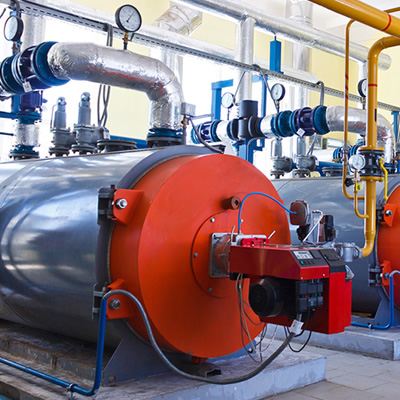
What is Flue Gas Recirculation?
Flue Gas Recirculation (FGR) is a combustion modification process for boilers that can increase boiler efficiency and steaming capacity, while at the same time reduce particulates, stack opacity and nitrogen oxide (NOx) emissions.
One of the main drivers of this technology is the Medium Plant Combustion Directive [MPCD] which effects all steam plant over a MHW in output and has now been adopted into UK legislation
How does it work?
The flame temperature may be reduced – and so lessen NOx production – by adding non-reactive gases into the burner. A useful “free” provision for such a gas is in the flue gases which have already left the combustion chamber and will be harmless and have a temperature that is reduced over the flame temperature.
By adding around 8-10% of flue gas into the flame, using digital combustion control systems, the temperature will be reduced by about 5-7%. This is commonly referred to as flue gas recirculation or FGR. It might be viewed that re-heating the hot flue gases may increase the production of NOx the relatively lower temperature inert gas lowers the temperature of the flame, hence reducing the production of nitrogen oxide particulates.
On a forced-draught [FD] burner, extra oxygen is made available to make sure complete combustion takes place but with FGR, the extra oxygen is lowered and partially replaced by inert flue gases which combines and bonds some of the flame energy therefore lowering the temperature. NOx production increases exponentially as temperatures rise, so reducing the flame temperature can readily cut NOx levels by up to 50%.
At higher rates of flue gas recirculation, the flame size can increase, which may cause impingement on heat transfer surfaces, so requiring a limitation on firing rate. The consequent reduction of the O2 content caps the possibility of the nitrogen providing harmful effects at the latter stages within the process.
What are the costs?
In terms of cap-ex cost, the burners are marginally more cost, as they are usually specifically produced for the plant application. The ducted FGR system and flue connections are relatively straight forward. According to guidance from a UK manufacturer we have experience with, typical additional cost – compared with that of a standard installation using FGR – is around 15% to 20% extra to the burner and flue costs, not to the overall project capital cost which usually incorporates a new steam boiler and associated systems.
What are the benefits?
There is little additional maintenance when using FGR, the main element of potential concern is to ensure that there is appropriate condensation extraction and correct damper operation by way of PPM's.
For more information on FGR and how we can help improve your energy efficiency please get in touch via email or telephone (01623) 741940.
